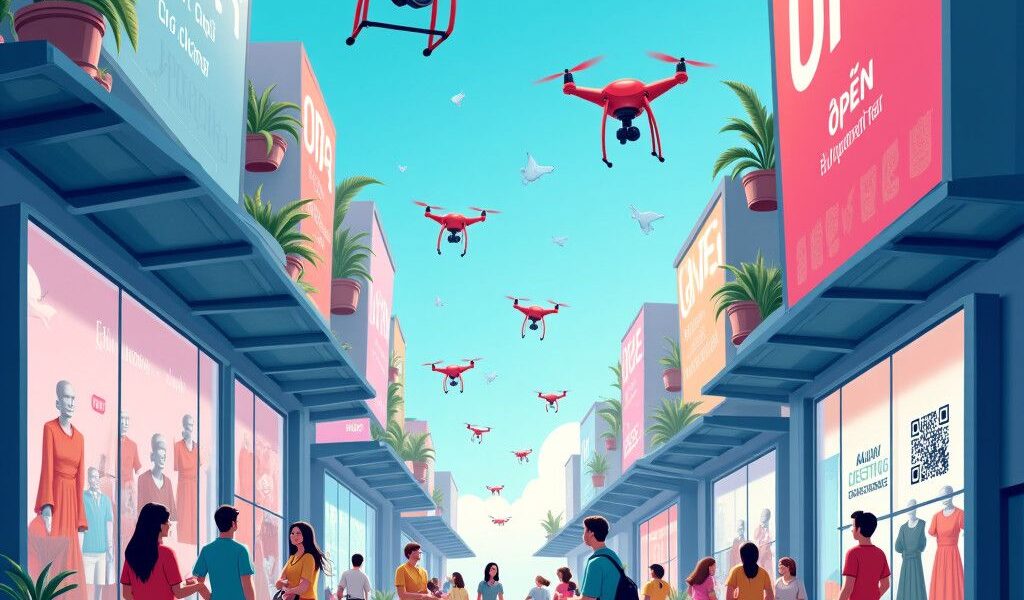E-commerce is changing quickly, and online retailers must stay ahead of the curve to remain competitive. The trends emerging in 2025 present both challenges and opportunities that will reshape the digital retail landscape. This article examines four pivotal trends: accessibility, artificial intelligence (AI), immersive technologies such as augmented reality (AR) and virtual reality (VR), and sustainability. Understanding these trends is vital for retailers looking to optimize the customer experience, attract new clientele, and build consumer trust.
1. Accessibility in E-Commerce: A Legal Requirement Starting in 2025
The EU Accessibility Directive will take effect in 2025, mandating that commercial websites and mobile applications be accessible to individuals with disabilities. Around 87 million people in Europe live with a disability, presenting a significant market segment that has traditionally been overlooked. Adhering to accessibility standards not only fulfills a legal obligation but also opens new market opportunities, fostering customer loyalty and enhancing the brand experience.
Research reveals that accessible websites can achieve up to 20% higher conversion rates. These enhancements, while requiring technical investment, lead to a more enjoyable user experience for all customers. For instance, ASOS, a UK-based fashion retailer, optimized its accessibility features, particularly for mobile users, resulting in an 11% revenue boost. Such improvements in accessibility create a more inclusive shopping environment benefiting all users.
Key measures to enhance accessibility include:
– Implementing screen reader compatibility for visually impaired users.
– Ensuring keyboard navigation for those unable to use a mouse.
– Utilizing alt text for images, making them accessible to individuals with visual impairments.
2. Artificial Intelligence in E-Commerce
AI is revolutionizing e-commerce, allowing retailers to provide personalized experiences while lowering operational costs. A Gartner study predicts that over 80% of customer interactions in e-commerce will be influenced by AI-driven systems by 2025. These systems include chatbots, personalized product recommendations, and intelligent search features that enable businesses to understand customer behavior more effectively.
The use of AI manifests in multiple ways:
– Chatbots assist customers with inquiries at any time, improving service quality.
– Recommendation engines analyze user behavior to suggest products tailored to individual preferences.
– AI-driven inventory management systems optimize stock levels based on predicted demand.
Amazon’s recommendation engine stands out as a successful example, generating over 35% of the company’s revenue through personalization. By integrating AI tools, retailers enhance customer engagement, streamline operations, and ultimately build brand loyalty.
3. Augmented Reality (AR) and Virtual Reality (VR) for Immersive Shopping Experiences
AR and VR technology is set to change the shopping experience fundamentally. By allowing customers to experience products in a virtual setting, these technologies help them make informed purchase decisions. A PwC study indicates that 71% of consumers are more likely to buy a product if they can test it in an AR or VR environment first.
Applications of AR and VR in e-commerce include:
– Virtual try-ons for clothing and accessories.
– Home improvement retailers enabling customers to visualize how products fit in their space.
– Immersive product demonstrations that convey intricate details through a virtual setting.
These technologies not only enhance customer interaction but also reduce product return rates, as consumers gain a clearer understanding of products before purchasing. By adopting AR and VR, forward-thinking retailers can differentiate themselves from competitors and create heightened customer loyalty.
4. Sustainability in E-Commerce: From Trend to Necessity
The demand for sustainable products and business practices is growing, positioning sustainability as a core element of e-commerce success. Surveys indicate that a significant number of consumers, particularly Millennials and Gen Z, prioritize sustainability in their purchasing decisions. Nielsen reports that 73% of Millennials are willing to pay more for eco-friendly products.
Retailers can promote sustainability through several approaches:
– Offering products made from recyclable or sustainable materials.
– Implementing transparent supply chains and ethical manufacturing processes.
– Utilizing eco-friendly packaging that minimizes environmental impact.
As legislation increasingly emphasizes reducing carbon footprints, sustainability transcends a mere trend and becomes essential for long-term competitiveness and consumer trust.
Conclusion: The Future of E-Commerce in 2025
In 2025, e-commerce will be significantly influenced by accessibility, AI, AR/VR, and sustainability. Retailers must invest in these trends to cater to evolving consumer expectations effectively. Accessibility not only caters to legal requirements but allows businesses to connect with a broader audience. AI provides tailored and efficient customer interactions, while AR and VR create engaging shopping experiences. Sustainability is no longer optional; it is key to securing the loyalty of ethically conscious consumers.
The year 2025 presents remarkable opportunities for online retailers willing to embrace these trends. By leveraging these developments, businesses will strengthen their market presence, create positive brand perceptions, and foster lasting consumer loyalty. Companies like signundsinn GmbH can assist retailers in implementing these strategies, ensuring they remain relevant and competitive in the digital marketplace.












